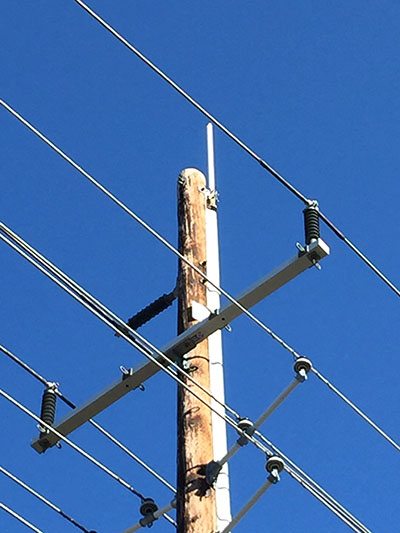In today’s hyper-connected world, we rely on consistent cellular service in both our personal and professional lives.
The use of cellular technology allows us to work remotely and stay connected on the go. Yet, despite widespread use of cellular technology, unreliable service with dropped calls is still a reality for many businesses. In a business environment, dropped calls most commonly occur because of interference from building materials such as concrete and cinder block or because of the distance between high-rise office locations and the nearest cell tower.
For businesses struggling with cellular connectivity, a passive distributed antenna system (DAS) can alleviate problems associated with both distance and interference and is an ideal solution for large buildings and commercial spaces.
[embedyt] https://www.youtube.com/watch?v=88QnAzN498Y[/embedyt]
How Does a Passive DAS Work?
A passive DAS works by capturing the existing cellular signal from nearby cell towers and routing the signal to a cellular booster where it is amplified. The signal is then redistributed throughout the area using smaller broadcast antennas, with signal power increased up to 32 times.
Antennas play a key role in the amplifier system. Donor antennas, installed on the roof or near a window, bring in the outdoor signal. Installing broadcast or “inside” antennas on the interior wall (panel antennas) or ceiling (dome antennas) help transmit the amplified signal to phones and other cellular devices indoors. Both types of antennas connect to the amplifier unit via coaxial cable.
From workstations to conference rooms, a passive DAS allows employees to harness full-strength cellular service throughout a boosted building, regardless of carrier. The system eliminates dropped calls, enhances voice quality and maximizes efficient data use.
Features to Consider in a Cellular Amplifier Solution
There are plenty of cellular connectivity options available on the market, but which one is right for your clients?
When the FCC released the Network Protection Standards limiting the permitted power of passive DAS, many dealers believed all boosters would be created equally. While the change in standards resulted in many passive DAS that met regulations, these solutions weren’t sufficient for some users who needed more output. So, WilsonPro set out to design a passive DAS with increased performance that still met all of the requirements of the new regulations.
WilsonPro took the same basic engine of previous market models, and, with some fine tuning, found we could squeeze more power out of the new laws. This work resulted in the WilsonPro 1000, which provides a three decibel (dB) gain in performance (+12dB vs. +15dB) to deliver the highest available downlink power on the market today.
The WilsonPro 1000 also includes XDR (Extra Dynamic Range) technology which forces the booster to reduce power without shutting down under signal overload conditions.
This unique XDR feature stands in contrast to many competing systems which shut down when they reach a maximum incoming signal strength threshold, causing the indoor cell signal to drop out. It also eliminates the need for costly site visits to restart a booster that has shut itself down due to oscillation or overload conditions.
In addition, the WilsonPro 1000 works for all cellular devices, all services and all U.S. and Canada cell phone carriers. What’s more, the booster’s integrated power supply, full color display and convenient antenna ports located on the top of the unit, make for easy installation by a single professional.
Contact us to find out more about the WilsonPro 1000 and how our solutions can enhance your clients’ cell signal. Or, Click here to download our Buyer’s Guide.

